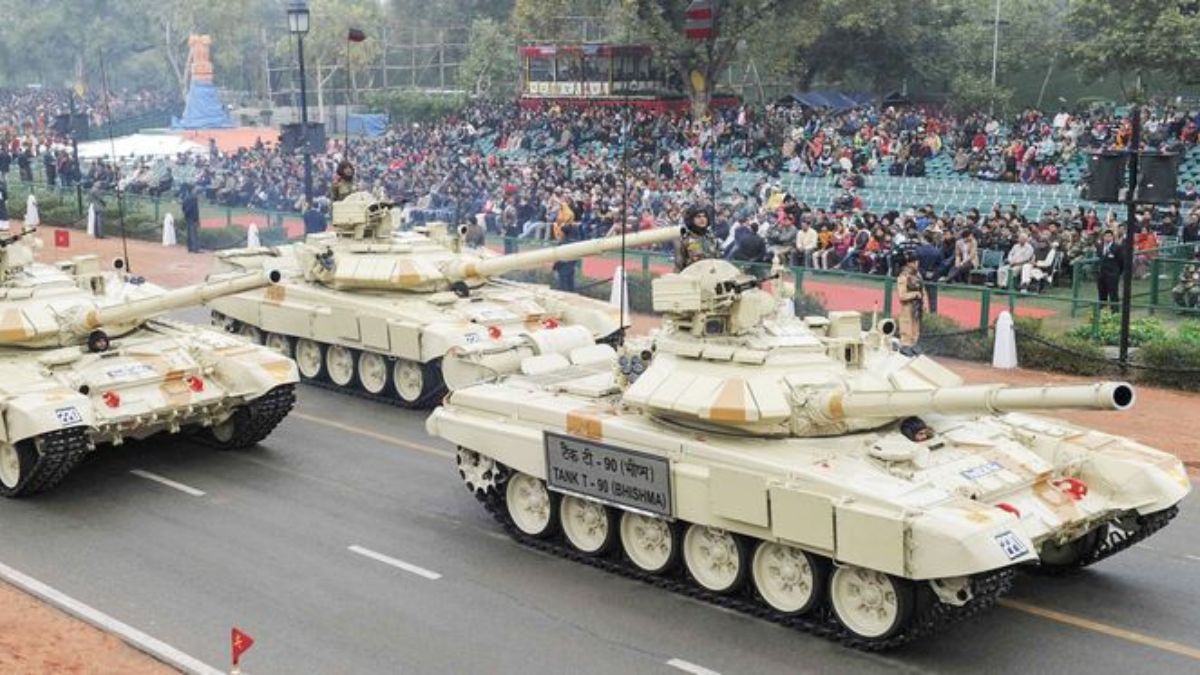Pakistan’s newest main battle tank, the Haider, was unveiled with fanfare in 2023 but few facts have been publicised. Rolled out by the state-run Heavy Industries Taxila (HIT) near Rawalpindi, it was meant to be a signal that the country’s armoured corps had found a 21st-century footing.
The reality, however, is that the Haider is based on China’s VT-4, a downgraded export model that Beijing’s own military refuses to field. Islamabad essentially had no choice but to buy an inferior tank because of supply chain issues.
In contrast, the heart of India’s tank fleet, the T-90 “Bhishma,” built under licence from Russia’s Uralvagonzavod Concern (part of the Rostec State Corporation) and produced domestically in Avadi, has become one of the Indian Army’s most adaptable and combat-credible assets. While Pakistan has leaned further into Chinese dependency, India continued to refine a weapon system rooted in Russian experience but increasingly local in execution.
Why has Pakistan ordered Chinese tanks?
Pakistan’s reliance on (China North Industries Group Corporation Limited) NORINCO was more a matter of circumstance than choice. The Haider replaces the Al-Khalid, a tank that once embodied Islamabad’s ambitions for military self-reliance. Designed with Chinese assistance and powered by Ukrainian engines, the Al-Khalid’s fate changed when the war in Ukraine shut down Kharkiv’s Malyshev Plant, cutting off the supply of 6TD-2 diesel engines, according to a recent report by the Russian Center for Analysis of Global Arms Trade.
Beijing swooped in, but clearly not with its best. NORINCO offered the VT-4, part of its export-only MBT-3000 line. It’s a tank that blends elements of older Chinese models, specifically the Type 96 and Type 99, into a simplified platform meant for clients with limited budgets and no access to Western suppliers. The VT-4 has been sold in small numbers to Thailand and Nigeria. However, even those armies have issues with its reliability.
The Haider’s production at Taxila, using Chinese powertrains and locally assembled components, was also a way to keep Pakistan’s tank factory running after its Ukrainian pipeline collapsed. Officially, 680 Haiders have been ordered. Unofficially, military planners admit that the tank’s Chinese engine lacks the rugged endurance of the Ukrainian one it replaces. The switch turned a quest for autonomy into a new dependency.
NORINCO’s own record adds little comfort. The company unveiled the VT-4 in 2014 at an airshow. Even a decade later, in 2024, the platform showed issues. The VT-4 stalled mid-demonstration at Zhuhai, unable to complete a hill climb.
How is T-90 Bhishma’s performance?
India’s T-90 Bhishma tells a contrasting story of endurance and adaptation. Derived from Russia’s T-90S platform, it represents a lineage of tanks that have seen active combat from Syria to Ukraine. Unlike China’s export tanks, Russia’s designs are being constantly refined through battle, with the consequent upgrades shared with partners like India.
At home, production at the Heavy Vehicles Factory in Avadi has given New Delhi both strategic resilience and industrial depth. Over the years, India has integrated its own fire-control systems, communication suites, and protective technologies into the Bhishma, gradually indigenising components and maintenance chains. The result is a fleet that, while Russian in heritage, is distinctly Indian in upkeep and evolution.
These war machines also have high credibility. The T-90M “Proryv,” the Bhishma’s Russian cousin, has survived repeated engagements in Ukraine, with upgraded armour and active protection systems against drones and anti-tank guided missiles. For an army facing both Himalayan altitudes and desert heat, a tank tested under extreme conditions is a necessity.
Where Pakistan’s Haiders are based off of a model that failed to perform even under ideal conditions at an exhibition, India’s Bhishmas have already proven durable in exercises and operational deployments from Rajasthan to Ladakh. That difference translates directly into strategic confidence.
How do India and Pakistan compare on strategic autonomy with MBTs?
Between Bhishma and Haider, there are also of two very different approaches to military modernisation. India’s relationship with Russia is one of technical continuity. New Delhi’s localisation of T-90 production has reduced exposure to foreign supply shocks and given it the ability to sustain, upgrade, and even export components on its own.
Pakistan’s partnership with China, on the other hand, entrenches reliance on Beijing’s goodwill and technology transfer. NORINCO’s export models (the MBT-2000, VT-1A, and VT-4) are built for affordability and political loyalty, not battlefield parity. Even within China, the PLA’s frontline units use the more sophisticated Type 99A while the export-grade tanks are reserved for client states.
In strategic terms, this meant Pakistan’s armoured corps was betting on an untested platform from a supplier that kept its best designs at home. The Haider while filling the army’s order books, does little to expand Islamabad’s autonomy.
Meanwhile, for India, the T-90 Bhishma has allowed India to bridge Russian design with domestic production, turning licence assembly into capability.
